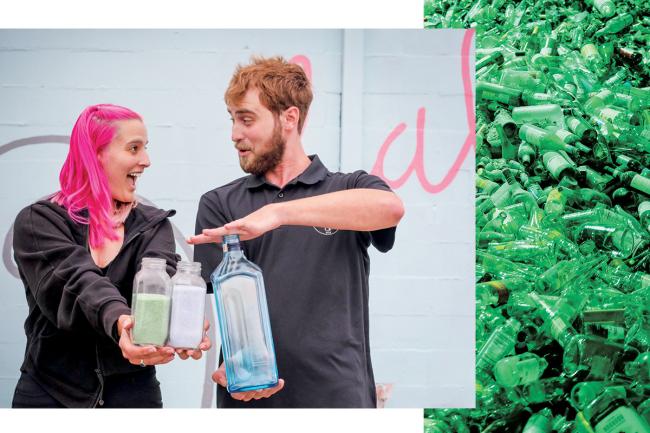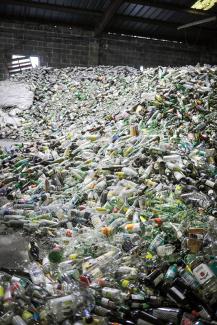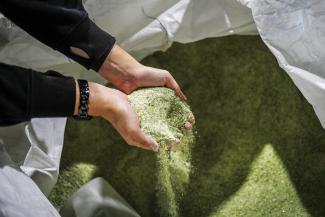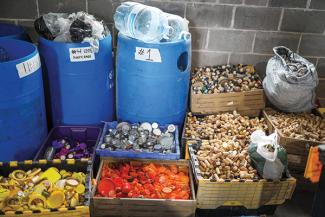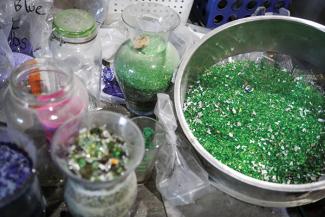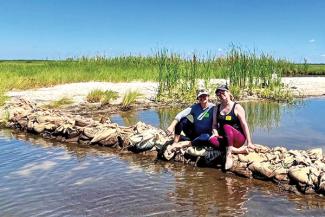(Photos by Jennifer Zdon)
While sharing a glass of wine in the spring 2020 semester of their senior year at Tulane, Franziska Trautmann and Max Steitz lamented the fact that the bottle from which they were pouring would inevitably end up in a landfill. They decided something needed to be done.
Since there wasn’t curbside glass recycling available to New Orleans residents, the two hatched a plan to recycle glass. While recycling glass to make other glass products is common in the United States and other countries, Trautmann and Steitz found a small machine that crushed glass into sand.
“That’s when it clicked because we knew that here in New Orleans, we need sand for so many things — coastal restoration and disaster relief being the main ones,” Trautmann said.
Recognizing they needed more resources to make the plan work long-term, the two started a GoFundMe page.
“And then a reporter at The Times-Picayune decided to do a story on it,” Trautmann said.
Within one week after the story was published, they reached their $10,000 fundraising goal.
“That was the fire that got us going — that community buy-in, literally; giving us money to make this happen and us wanting to do right on that promise,” she said.
That promise turned into the launch of Glass Half Full, a glass recycling program that collects glass from residents and businesses and converts it into sand for coastal restoration and disaster relief. The glass is also repurposed for use in construction and the manufacturing of art, jewelry and other products.
Now, three years since its inception, the Glass Half Full team has gone from an uptown backyard operation using a small machine that crushed one bottle at a time to a Desire neighborhood 40,000-square-foot facility on Louisa Street with a pulverizing machine that has successfully recycled over 3.5 million pounds of glass.
Trautmann, from Carencro, Louisiana, is chief executive officer. She received a Bachelor of Science in Engineering with a major in chemical and biomolecular engineering from the School of Science and Engineering in 2020. Steitz, from New York City, is chief operating officer and chief financial officer. He is a political science/international development and international relations major — with a few more credits left to graduate from the School of Liberal Arts.
Trautmann’s and Steitz’s hometowns and upbringings have merged well in achieving the Glass Half Full mission.
“I think being from a small town in Louisiana, growing up around the environment, I had that passion and care for the environment without, for lack of better words, the governmental programs to support that,” Trautmann said. “Whereas Max grew up in the ‘Concrete City,’ with not as much access to the environment, but with recycling governmental programs.”


